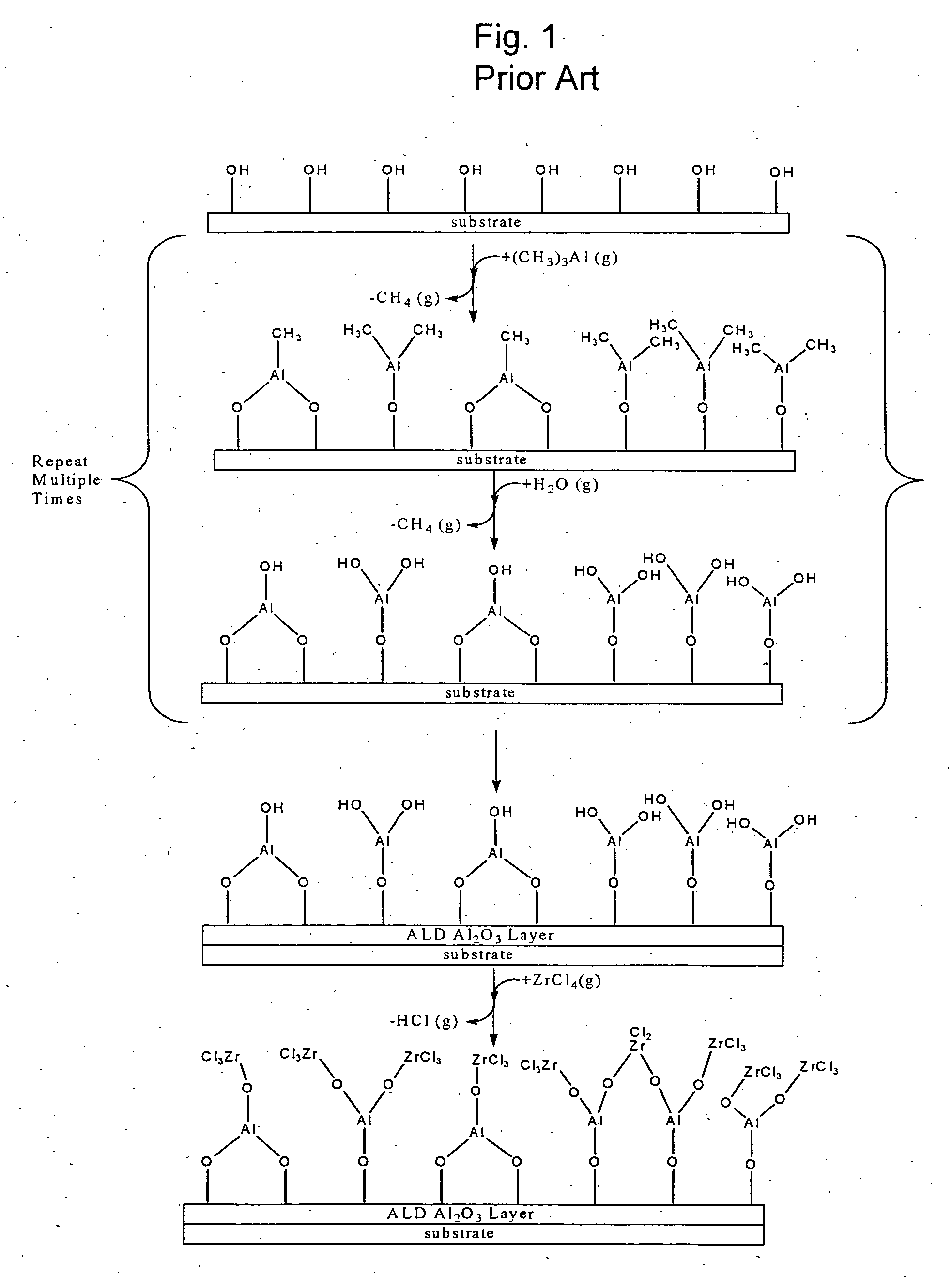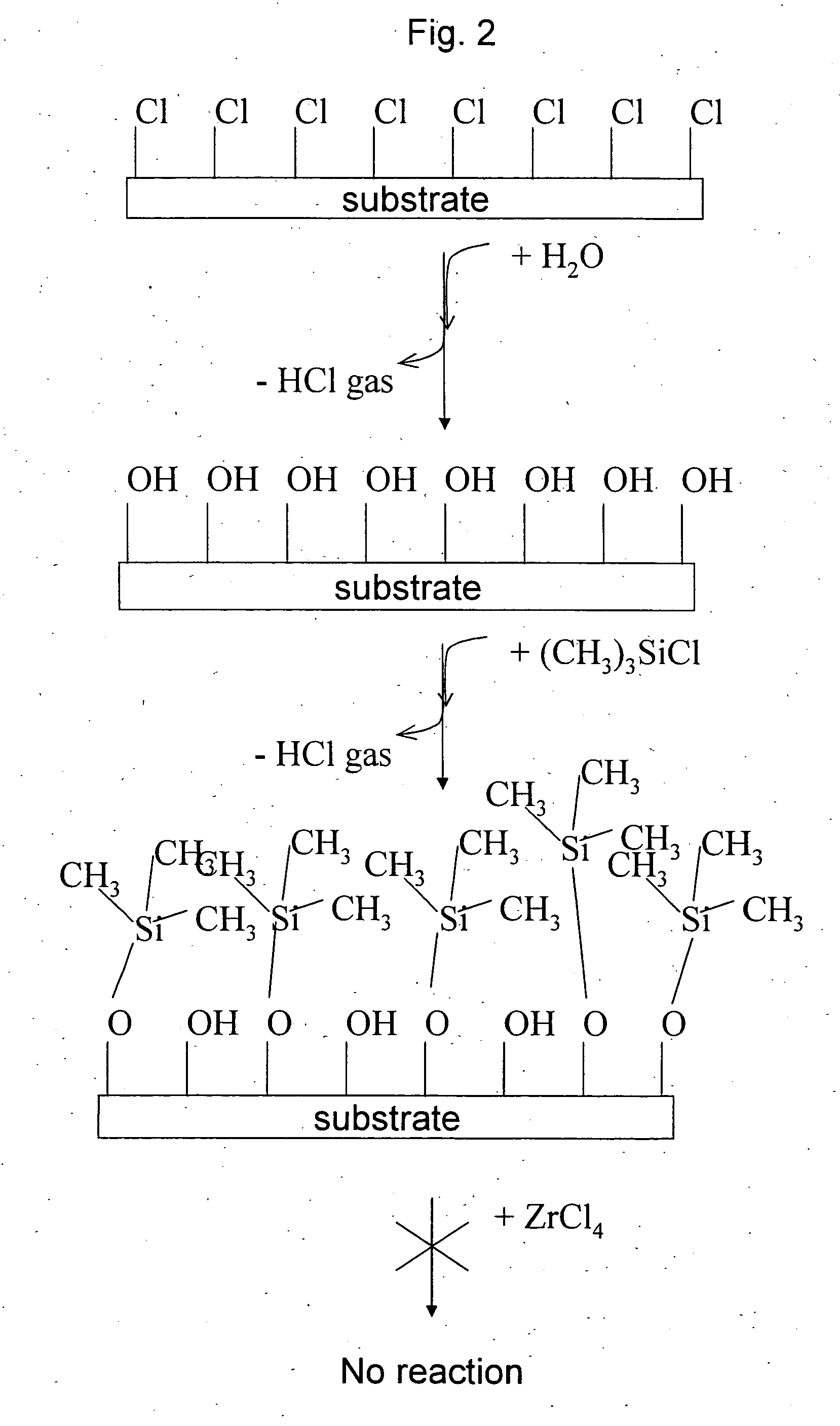Passivating ALD reactor chamber internal surfaces to prevent residue buildup
a technology of internal surfaces and ald reactors, which is applied in the direction of chemical vapor deposition coating, metal material coating process, coating, etc., can solve the problems of unwanted deposition of the first and second precursors on the internal surfaces and internal components of the ald reactor, loss of production, and cleaning adds to the cost of ownership, so as to reduce the amount of precursors and minimize undesired chemisorption
- Summary
- Abstract
- Description
- Claims
- Application Information
AI Technical Summary
Benefits of technology
Problems solved by technology
Method used
Image
Examples
Embodiment Construction
[0016] Atomic layer deposition (ALD) has been described as involving the formation of successive atomic layers on a substrate such as a semiconductor substrate. Such layers may comprise an epitaxial, polycrystalline, amorphous, etc. material. ALD may also be referred to as atomic layer epitaxy, atomic layer processing, etc. The deposition methods are often described in the context of formation of atomic layers on a semiconductor wafer. However, ALD deposition can be employed in the processing of a variety of substrates other than semiconductor substrates.
[0017] ALD has been described as a self-limiting process, in that a finite number of sites exist on a substrate to which a first precursor specie may form chemical bonds. Once all of the finite number of sites on the substrate are bonded with the first specie, the first specie will not bond to itself and thereby stack or form layers. When a second specie, i.e., a second precursor is utilized for deposition, it too will only bond to...
PUM
| Property | Measurement | Unit |
|---|---|---|
| Temperature | aaaaa | aaaaa |
Abstract
Description
Claims
Application Information
 Login to View More
Login to View More - R&D
- Intellectual Property
- Life Sciences
- Materials
- Tech Scout
- Unparalleled Data Quality
- Higher Quality Content
- 60% Fewer Hallucinations
Browse by: Latest US Patents, China's latest patents, Technical Efficacy Thesaurus, Application Domain, Technology Topic, Popular Technical Reports.
© 2025 PatSnap. All rights reserved.Legal|Privacy policy|Modern Slavery Act Transparency Statement|Sitemap|About US| Contact US: help@patsnap.com


